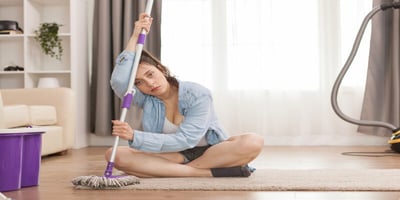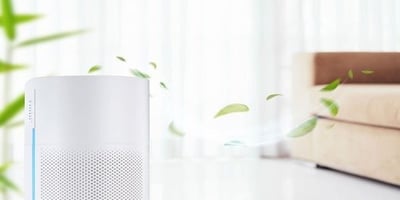How to Purify Air in Home From Dust? Make Your Home Healthier
One thing that you can change to improve your living space is the indoor air quality. It is essential because it affects the quality of the air we breathe directly, which is bound to influence everything about our health, from our breathing to how well we sleep to how comfortable we are overall. Household dust comes from things like carpets and curtains, cat hair and dander, pollen, and even the tiny particles our skin and hair shed. Pollutants from the outside can also enter homes through open doors and windows, making the dust inside even worse. The accumulated dust inside may lead to poor air quality, which in turn heightens breathing problems like asthma and allergies and, over time, can affect thinking clearly. So, through the cleaning of the air in your home, you are reducing those health risks and making it a better place to live.
Identify Sources of Dust
Dust in homes is derived from a number of sources, which, when added together, can affect the overall indoor air quality:
- Fabrics: Items such as curtains, carpets, and upholstered furniture are major dust collectors. They collect and release dust particles into the air, which can then circulate within the home environment.
- Human Skin Cells: Surprisingly, human skin cells are one of the most significant contributors to household dust. As people naturally shed skin cells, these tiny particles accumulate in the environment.
- Outdoor Pollutants: Dust doesn't just generate indoors; outdoor sources like pollen, soil, and industrial pollutants can enter homes through windows, doors, and HVAC systems, adding to the indoor dust load.
- Pet Dander: Homes with pets have additional sources of dust from pet hair and dander, which can add significantly to the amount of airborne particles.
- Paper Fibers: Books, newspapers, and other paper products slowly shed fibers, adding to dust levels.
Places That Tend to Collect Dust
Some areas of your house are more likely to collect dust than others because they experience little air circulation or are rarely cleaned:
- Under Furniture: Because they are not normally cleaned, spaces under beds, chairs, and other furniture items tend to collect a lot of dust. Carpets and rugs are excellent dust collectors. Being flexible, they trap dust particles that are disturbed and float into the air when people step on them.
- Ventilation Systems: If you do not maintain your HVAC systems, they might just circulate dust around your home. Vents and ductwork collect dust, which, when not regularly cleaned, can keep circulating.
- High shelves and ceiling fans: These surfaces tend to get dirty more often, making it easy for the dust to be stirred and flow in the air.
- Corners and baseboards: People only sometimes clean these, so dust and other things can build up over time and make the air more dusty.
Knowing where dust originates and where it tends to accumulate will help you manage and remove dust effectively from your home.
Air-Cleaning Solutions
Air filters might be an excellent way to clean the air inside and reduce the amount of dust in the room. Some key things you should know about the kinds of air filters are:
- HEPA filters: High-efficiency particulate Air (HEPA) filters are among the finest because they can trap at least 99.97% of the particles as small as 0.3 microns, including dust, pollen, mold, and bacteria.
- Activated carbon filters: While HEPA filters are excellent for particle collection, activated carbon filters are far superior in removing gases and odors, hence being an excellent complementary mode of purification.
- Size of the Room: Check the filter to match the size of the room. Most air cleaners have specifications on the square footage they can effectively clean.
- Specific Needs: Consider any specific needs you may have, such as eliminating odors or relieving asthma, which may require a HEPA filter.
How Often to Replace Filters and How?
- Improving Ventilation: Proper air circulation is necessary to control dust and enhance air quality.
- Fans: Use vent fans in bathrooms and kitchens to remove the dusty air and excess humidity, which can fuel the proliferation of dust mites.
- Open Windows: Open the windows whenever you can to introduce fresh air and remove the old, dusty air. The ideal time to do it is when pollen or pollution counts are low.
- Air Circulation: Use ceiling or oscillating fans to enhance air circulation. Air circulation will prevent dust from settling.
Natural Air Cleaners
Some houseplants can naturally clean the air, although most are not as effective as air purifiers:
- Spider Plant: It is known that spider plants can absorb dust and other air pollution.
- Peace Lily: This flower can clean the air by eliminating mold spores that the dust carries.
- English ivy: This plant is efficient in removing formaldehyde that might be present in home dust.
Installing these air-cleaning systems into your home will significantly reduce the amount of dust and ultimately improve the quality of air by making it healthier and more comfortable for every living organism.
How to Do Maintenance Correctly?
Air filters in HVAC systems and air purifiers require cleaning or replacement regularly. In fact, cleaning air filters is one of the most important maintenance tasks to keep the indoor air fresh. Here are some essential factors to consider:
- HVAC Filters: You should check your air filters every month, more often during summer and winter, because they are used continuously. If necessary, clean or replace them every three months at the minimum. Dirty filters make your HVAC system less effective and spread dust in your house.
- Filters for Air Purifiers: HEPA filters have to be replaced every 6 to 12 months, subject to the model and usage level. You can replace carbon filters every three months. This kind of replacement ensures that the optimum usefulness and effectiveness in trapping dust and other airborne particles are met.
- Importance of Clean Filters: The system is supposed to work with clean filters. Only then will they ensure that your air cleaner and HVAC system do not overwork, leading to energy waste or premature wear-out of parts.
Sealing Leaks
Another critical thing is the ability to keep external dust out of your home, and you can do so through proper sealing:
- Check the Windows and Doors: Keep inspecting the windows and doors for cracks and holes in the seals. Any small hole may let dust and pollution enter.
- Use Weatherstripping: Wrap weatherstripping around doors and windows to fill in any gaps that have formed due to wear and tear or settlement. This will save energy by keeping cool air inside in the summer and warm air inside in the winter. It will also keep dust out.
- Fill in ducts: Fill in the gaps in the ducts in your HVAC system. Problems with ducts can cause a lot of dust to build up and spread throughout the house, which wastes energy.
- Caulking: You should use caulking to stop other leaks around the door and window frames and anywhere else on the outside that might be at risk.
Taking care of these maintenance tasks on a regular basis will help your other efforts to keep your home dust-free and the air clean. Making sure your living space is healthy and comfy means keeping filters clean and blocking off any other places dust could get in.
To sum up, getting rid of dust from the air in your home is important for keeping it clean and healthy. You can reduce dust in your home by finding common sources of dust, using air purifiers, cleaning more effectively, and improving your home's airflow.
Taking care of your home is another important way to keep the air inside clean and free of dust. Care includes getting new filters and fixing any leaks. In addition to making the air in your home healthier, these steps will also improve the health of everyone who lives there. Follow these tips to make your home a healthy, cleaner place that you and your family can enjoy all year.


































.jpg)


.png?height=200&name=image_2024-10-25_20-38-56%20(1).png)
.jpg?height=200&name=image6%20(2).jpg)